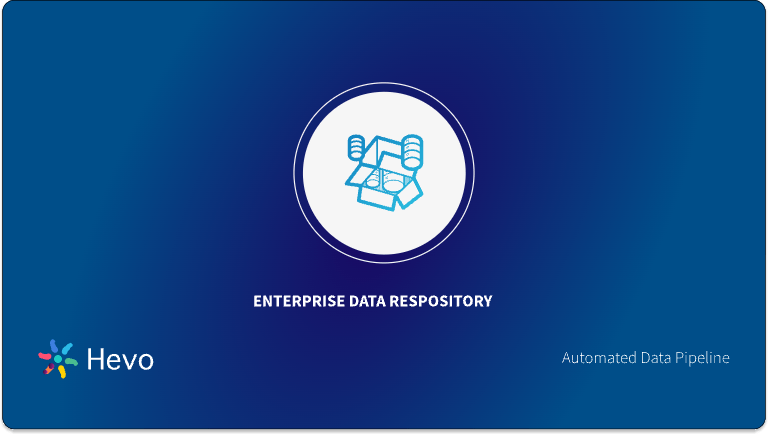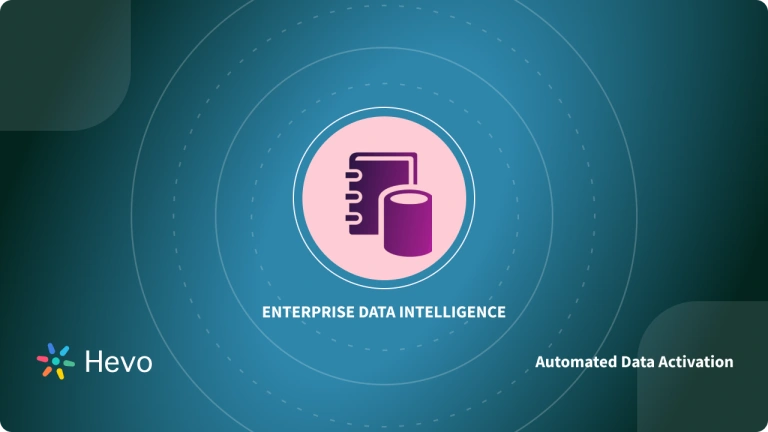Enterprises generate vast amounts of data from multiple sources, such as Customer Relationship Management platforms, Enterprise Resource Planning (ERP) applications, marketing metrics, and more. However, you need seamless data exchange between numerous applications to perform deep analytics and derive business insights. Without proper integration, this intricate data ecosystem can become a tangled mess.
This is where Enterprise Data Bus (EDB) comes into the picture. It acts as a conduit for all your data management and analysis tools, making the data available for further assessment. In this article, you will learn about an Enterprise Data Bus, its benefits, and how it differs from Enterprise Service Bus (ESB). Let’s dive straight into it!
Table of Contents
What is an Enterprise Data Bus?
An enterprise data bus is a sophisticated architectural concept that facilitates efficient data exchange across disparate applications within your organization. It provides a dedicated data channel specifically designed to handle high-volume data transfer, ensuring flexibility and scalability.
An enterprise data bus adopts DataOps concepts, simplifies data integration, and fosters organizational agility. It falls under the broader umbrella of Enterprise Service Bus (ESB). However, the key distinction is that ESB facilitates communication between applications, and EDB focuses on data movement.
To effectively deploy an enterprise data bus, you must understand your business objectives, clearly outline the desired analysis outcomes, and stay abreast of the selected implementation tools. Proper planning will help mitigate potential risks, saving you time and resources.
With Hevo, you can seamlessly integrate data from multiple sources into any data warehouse, ensuring your organization has a unified view of its data assets.
Why Use Hevo for Data Warehouse Integration?
- Broad Source and Destination Support: Connect to over 150+ sources, including databases, SaaS applications, and more, and load data into your preferred data warehouse.
- Real-Time Data Sync: Keep your data warehouse up-to-date with real-time data flow, ensuring your analytics are always based on the latest information.
- No-Code Platform: With Hevo’s user-friendly interface, you can easily set up and manage your data pipeline without any technical expertise.
Benefits of an Enterprise Data Bus
Enterprise data bus offers plenty of advantages to organizations looking to optimize data management. Some of them are listed below:
- Improved Data Reliability for Analytics and Decision-Making: The enterprise data bus prioritizes data quality. By implementing tools for data ingestion, transformation, storage, and management, EDB ensures that the data you use for analytics is clean, reliable, and ready for use. This reduces rework and the likelihood of erroneous decisions based on inaccurate data.
- Cost-Effective Data Storage and Scalability: EDB utilizes a Data Ocean to store large amounts of raw data in a cost-effective and scalable manner. This allows organizations to capture and store vast datasets without significant upfront investment.
- Unified Platform for Data Governance and Compliance: With enterprise data bus, you can promote data governance as you get a centralized platform for managing data access, security, and lineage. This simplifies your compliance efforts and ensures responsible data usage while adhering to regulations.
- Faster Time to Insights: By automating data ingestion, transformation, and delivery through the EDB layers, you can significantly reduce the time for obtaining valuable data insights. It eliminates manual data preparation steps and allows your teams to focus on higher-level tasks like model building and analysis.
The Architecture of an Enterprise Data Bus
An enterprise data bus architecture typically comprises several layers, each crucial for seamless data exchange and integration. These layers have scalable components that optimize resource utilization and generate trusted data for analytics.
Here is a breakdown of the EDB architecture:
- Data Sources: These are the systems, applications, databases, and devices that generate or store data within your enterprise. They include structured, semi-structured, and unstructured data such as traditional relational databases, social media feeds, website analytics metrics, etc.
- Data Integration: This layer serves as the entry point for your data into the enterprise data bus. It has tools to integrate with different data sources and destinations to extract, perform basic transformations, and store data in formats readily accessible to subsequent layers.
The enterprise data warehouse bus matrix is crucial for organizing and prioritizing data integration efforts. It outlines the relationships between various data sources, integration processes, and analytics requirements, providing a structured framework for managing data flows. This enables the cost-effective ingestion of your extensive datasets in a comparably raw state.
- Unprocessed Data Repository: The high-volume repositories called Data Oceans store the source data after the data integration, primarily in its original state. They prioritize faster data loading, allowing you to quickly retrieve the data for further analysis and business intelligence projects.
- Data Processing and Transformation: You can conduct further complex transformations, such as translation, data type matching, normalization, and more, to produce “fit-for-purpose” data. This high-quality data, suitable for analytics and your business intelligence projects is stored in Data Lakes. This layer ensures your data’s reusability and increased productivity during further analysis.
- Processed Data Repository: Data lakes are high-performing scalable repositories that store your cleaned and analysis-ready data. You can use Data Lakes as a temporary workspace without worrying about it affecting your other architectural layers. By quickly accessing this reliable data, your teams can run analytics and develop business intelligence proposals.
- Monitoring and Management: The enterprise data bus also provides tools to perform analytics studies, enabling you to monitor and manage your data workflows. The EDB facilitates the connection between layers in a bi-directional manner, allowing insights from data analysis to influence source systems. This improves the data quality, reliability, and operational efficiency.
The design of the enterprise data bus architecture provides efficient data flow. It helps you derive maximum value from your data assets and encourages your organization to utilize data-driven insights to create business value.


Limitations of Enterprise Data Bus
While enterprise data bus offers a robust data integration solution, it has a few inherent limitations. Here are some drawbacks you would want to consider before implementing an EDB:
- Complexity and Overhead: An enterprise data bus architecture involves multiple layers and tools. Planning, configuration, and orchestration across these layers can be complex, requiring significant expertise in data management and big data technologies. This complexity could lead to latency or challenges for organizations with limited technical resources.
- Potential for Data Silos: While EDB promotes data integration, the creation of separate data lakes for different study groups can lead to siloed data if you don’t manage it properly. Maintaining consistency and ensuring all teams have access to relevant data across the enterprise might require additional effort.
- Security Considerations: The enterprise data bus facilitates bi-directional data flow, where analytics results can influence the data sources. Implementing robust transformation techniques is even more crucial to mitigate the risk of bad data feeding back into source systems. Therefore, you should clearly define permissions that dictate what data can be modified, by whom, and under what circumstances.
How Hevo Can Be a Modern Solution
Integration Platform as a Service (iPaaS) solutions like Hevo have emerged as a modern alternative to traditional enterprise data bus architectures. Hevo is a cloud-native, zero-maintenance data pipeline platform that offers over 150 plug-and-play connectors for seamless data integration. Based on your evolving data needs, you can achieve scalability with minimal latency and no data loss.
Unlike EDB, which relies on technically proficient professionals for utilization, Hevo provides an intuitive, no-code, user-friendly interface that even your non-tech team members can use easily. You can use this ELT tool’s built-in data transformation and auto schema mapping features to ensure faster implementation times.
Hevo provides a comprehensive set of features that allow you to monitor your data pipelines, identify and resolve issues before they affect your workflow. The error-handling mechanisms promptly alert you to errors and streamline the troubleshooting process. With Hevo, your teams can focus on the data analysis and leverage the insights to make data-driven decisions.
Wrapping Up
This article outlines the enterprise data bus (EDB), its benefits, and architecture. The EDB provides your organization with efficient data flow from sources to analytics-ready repositories, fostering data-driven decision-making. However, with advantages come limitations, particularly the complexity of implementing an EDB, prompting you to turn to modern solutions like Hevo. By incorporating data integration solutions in your organization, you can save time and focus on the applications of the available data.
Unlock data-driven insights for better business outcomes with Enterprise Data Intelligence. Explore details at Enterprise Data Insights.
Want to take Hevo for a spin? Sign Up for a 14-day free trial and experience the feature-rich Hevo suite firsthand.
Share your experience of Enterprise Data Bus in the comments section below!
FAQs
ESB (Enterprise Service Bus) vs. EDB (Enterprise Data Bus): How are they different?
Enterprise Service Bus (ESB) is a communication hub for various software applications within your company. It translates messages between applications that use different formats and protocols, ensuring smooth data exchange. Enterprise Data Bus (EDB), on the other hand, focuses specifically on moving large volumes of data between disparate systems. It prioritizes speed, reliability, and security for data transfer.
To give you an analogy, if ESB is a translator for your company’s programs, allowing them to understand each other, then EDB is a high-speed highway for your company’s data, ensuring it gets to the destination faster.
What is an Enterprise Data Bus?
An Enterprise Data Bus is an architectural framework for managing data exchange between systems in an organization, ensuring scalability and standardization. It enables decoupled communication, centralized governance, and seamless data integration.
What are the 3 types of data bus?
Data Bus: Transfers actual data between devices like memory and processors, determining system throughput.
Address Bus: Sends memory or device addresses from the CPU, defining accessible memory size.
Control Bus: Handles control signals for coordinating system operations like read/write commands.





